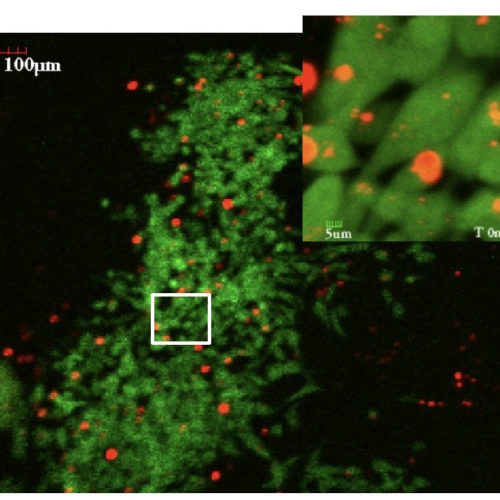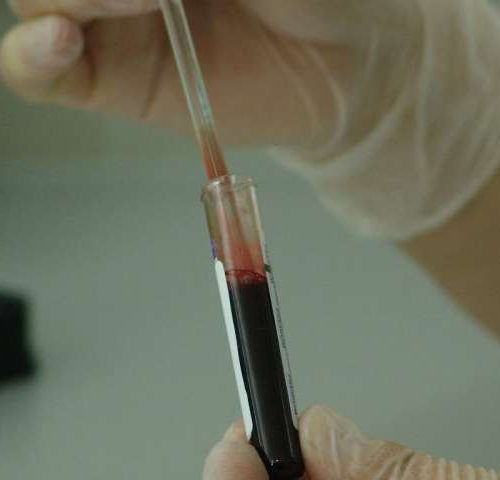A new imaging technique sends nanoparticles into living cells to reveal important information about cell structure—including how tumor cells physically change as they form a tumor.A new imaging technique sends nanoparticles into living cells to reveal important information about cell structure—including how tumor cells physically change as they form a tumor.A new imaging technique sends...
Tag: <span>diagnosis</span>
First official ATS practice guidelines for Sarcoidosis cover diagnosis and detection
April 20, 2020–New guidance is available for physicians who must go through a number of steps to provide a probable diagnosis of sarcoidosis – an inflammatory disease that affects the lungs, lymph glands, and other organs. The American Thoracic Society has published an official clinical practice guideline in which a panel of experts strongly recommended...
Nasal smear as an allergy screening test
by Technical University Munich 130 million people in Europe suffer from hay fever and other forms of allergic rhinitis. Until now, these conditions have typically been diagnosed using blood samples or skin prick tests. The latter method is often seen as particularly uncomfortable because the skin is exposed to various allergens and punctured with a...
Increased rate of infections may indicate a future cancer diagnosis
AMERICAN ASSOCIATION FOR CANCER RESEARCH Bottom Line: Patients experienced a greater occurrence of infections in the years preceding a cancer diagnosis. Journal in Which the Study was Published: Cancer Immunology Research, a journal of the American Association for Cancer Research Author: Shinako Inaida, PhD, a visiting researcher at the Graduate School of Medicine at Kyoto...
Cancer mutations occur decades before diagnosis
EUROPEAN MOLECULAR BIOLOGY LABORATORY Researchers at EMBL’s European Bioinformatics Institute (EMBL-EBI) and the Francis Crick Institute have analysed the whole genomes of over 2600 tumours from 38 different cancer types to determine the chronology of genomic changes during cancer development. Cancer occurs as part of a lifelong process in which our genome changes over time....
New classification system for tumors can guide diagnosis and treatment options for cancer
CENTER FOR GENOMIC REGULATION Based on the largest study of cancer patients of its kind, scientists have created a new way of classifying tumours. Clinicians can use genome sequencing to assign their patients’ tumours to one of sixteen groups in the new classification system, ten of which provide important information for the diagnosis and treatment...
New AI Model Tries to Synthesize Patient Data Like Doctors Do
PNNL incorporates information of over 300,000 medical concepts, more than any existing AI data set, in effort to aid physicians’ diagnoses Artificial intelligence will never replace a doctor. However, researchers at the Department of Energy’s Pacific Northwest National Laboratory have taken a big step toward the day when AI can help physicians predict medical events....
Lab leads effort to model proteins tied to cancer
This news or article is intended for readers with certain scientific or professional knowledge in the field. Computational scientists, biophysicists and statisticians from Lawrence Livermore National Laboratory (LLNL) and Los Alamos National Laboratory (LANL) are leading a massive multi-institutional collaboration that has developed a machine learning-based simulation for next-generation supercomputers capable of modeling protein interactions...
Implantable cancer traps could provide earlier diagnosis, help monitor treatment
UNIVERSITY OF MICHIGAN ANN ARBOR–Invasive procedures to biopsy tissue from cancer-tainted organs could be replaced by simply taking samples from a tiny “decoy” implanted just beneath the skin, University of Michigan researchers have demonstrated in mice. These devices have a knack for attracting cancer cells traveling through the body. In fact, they can even pick...
Seeking better treatment for ALS, Lou Gehrig’s disease
COLD SPRING HARBOR LABORATORY There is currently no cure for amyotrophic lateral sclerosis (ALS). But new research could open up avenues for better diagnosis and more effective treatment. The study, led by Cold Spring Harbor Laboratory Associate Professor Molly Gale Hammell, analyzed the role proteins called TDP-43 play in ALS, also known as Lou Gehrig’s...




